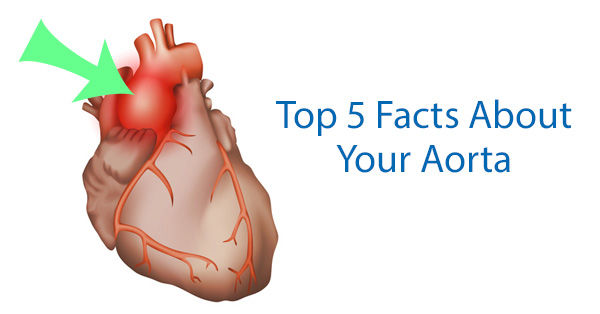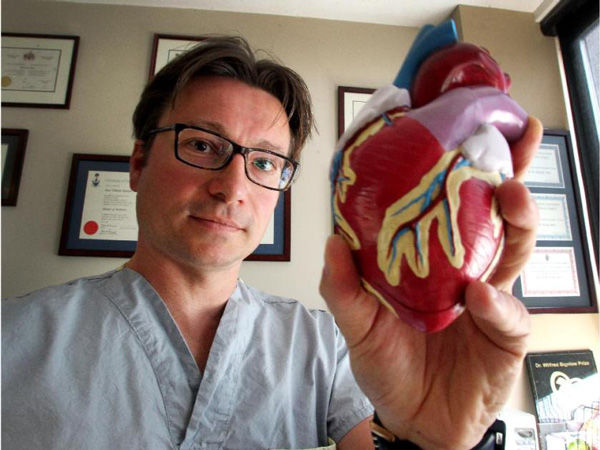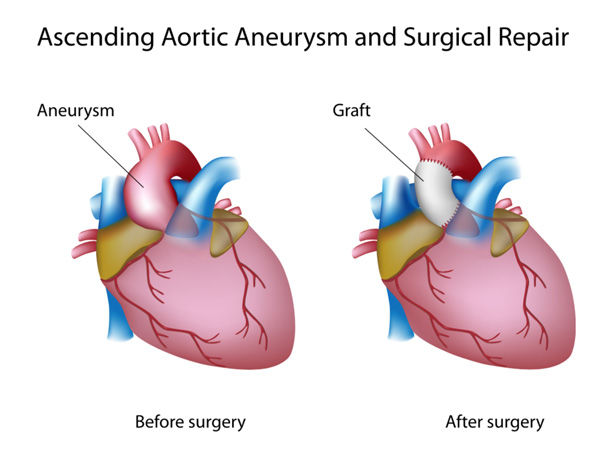What 5 Facts Should You Know About The Aorta?
By Adam Pick on July 11, 2018
If you didn’t know…
Your aorta is the largest artery in the body. It starts at the top of the heart’s main pumping chamber, the left ventricle, and extends down to the abdomen. Blood is pumped from the left ventricle into the aorta through the aortic valve, which is a tri-leaflet heart valve for 98% of the population.
As many people in this patient community are aware, the aorta can weaken and expand. This bulge in the aorta is called an aneurysm. In worse case scenarios, an aortic aneurysm can rupture (or dissect). Together, we have learned that many patients with heart valve disease – especially bicuspid aortic valves – also have aortic aneurysms.

In a recent newsletter, I referenced an educational post by Dr. Thomas Gleason about timing the surgical intervention for an aortic aneurysm and bicuspid aortic valve. In the post, Dr. Gleason referenced the guidelines that doctors use to determine when to operate. Shortly after mentioning this article, Dr. Paul Fedak, a Calgary-based heart surgeon and long-time supporter of HeartValveSurgery.com, sent me an email. In his note, Dr. Fedak informed me that the guidelines had changed and that we should update our community.
I thought it was a great idea.

Dr. Fedak’s Top 5 Facts About Your Aorta
I asked Dr. Fedak, who is an incredibly nice guy, what should patients know about the aorta.
In response, he sent me these “Top 5 Fact About Your Aorta”.
- You are not a ticking time bomb. Research is showing that the risk of the aorta rupturing or dissecting is not as high as we once believed;
- Surgery to remove an enlarged aorta is recommended for most people with Bicuspid Aortic Valve at 5.5 cm (based on a CT scan or MRI test);
- Surgery to remove an enlarged aorta is recommended for some people with Bicuspid Aortic Valve at 5.0 cm (if they have other high risk features as determined by your physicians);
- Surgery to remove an enlarged aorta is recommended for most people with Bicuspid Aortic Valve at 4.5 cm if they are already having valve or other heart surgery;
- Surgery to remove an enlarged aorta is NOT recommended if the size of the aorta is under 5.0 cm if the valve is still working well and the patient is of average height/body size.

More Insights About Bicuspid Aortic Valves & Aortic Aneurysms
As you can see above, there is a direct connection between aortic aneurysms and Bicuspid Aortic Valves. Bicsupid aortic valves have two valve leaflets instead of three. And, Bicuspid Aortic Valves are the most common congenital cardiac disorder. If you would like to read more about this topic, you can review the American Association for Thoracic Surgery Consensus Guidelines on Bicuspid Aortic Valve-Related Aortopathy, by clicking here.
Many thanks to Dr. Fedak for keeping me and our patient community up-to-speed on the guidelines that help clinicians determine the best and most appropriate time for an operation!!!
Keep on tickin!
Adam
|
Larry Sparks says on July 12th, 2018 at 1:48 pm |
|
My current ejection fraction is 47%, what can I do to increase this to the normal 50-70%? |
 |
|
Bob Hardenburg says on July 12th, 2018 at 1:50 pm |
|
Adam, great article/ update. However, majority of info here is for patients with “bicuspid” aortic valves. What about those of us with leaky/ regurgitating non-bicuspid valves? Specifics on surgery necessary when aorta size is XX cm, etc. Thanks for any feedback! Bob H. |
 |
|
Dan Schill says on July 12th, 2018 at 1:59 pm |
|
Hi Adam and everyone… that was also my thought… I have an aortic valve the has become a bicuspid valve due to 2 of the leaflets have calsfied together… |
 |
|
Adam says on July 12th, 2018 at 5:43 pm |
|
Hey Dan – Like you, I also had a bicuspid aortic valve. Sounds like the calcium has made your valve stenotic? My valve was both stenotic and regurgitant. Has surgery been recommended yet? |
 |
|
Adam says on July 12th, 2018 at 5:44 pm |
|
Thanks Bob! I’ll pass that along to Dr. Fedak as well. You raise some great questions. Give me some time to get you an expert opinion. Sound good? |
 |
|
Adam says on July 12th, 2018 at 5:45 pm |
|
Larry, You raise another great question. Unfortunately, I don’t have a great answer. Let me ask around and see what I learn. I’ll circle back with you. |
 |
|
Dan Schill says on July 12th, 2018 at 6:11 pm |
|
Nope… not yet.. not sure what they are waiting for… I take almost 300 pills a month… guess its buying me some time…. |
 |
|
Dan Schill says on July 12th, 2018 at 6:14 pm |
|
Adam… when did you have your surgery ??? |
 |
|
Adam says on July 12th, 2018 at 6:17 pm |
|
2005 |
 |
|
Mark Hensberg says on July 13th, 2018 at 1:40 am |
|
Hi Adam |
 |
|
Andres says on July 13th, 2018 at 11:49 am |
|
Hi Adam, thanks for this great update…, I have bicuspid valve and also regurgitation, will it (regurgitation) be a risk factor that could make the aorta aneurism to be consider for surgery at a shorter time (say 5mm instead of the new one 5.5mm) Kind Regards. |
 |
|
Piyush Rath says on July 16th, 2018 at 4:50 am |
|
When you’re running around, or if you’re excited, have you noticed that your heart beats faster? Well that’s because your heart needs to work even harder than normal to get more blood to your muscles so they’re in tip-top shape. Gosh as if it doesn’t work hard enough already. http://fusionkraft.in/ |
 |
|
Vaibhav Dixit says on July 28th, 2018 at 6:16 pm |
|
Doctor at Cleveland clinic and other big hospitals still asking for surgery at 5cm. Whose recommendation to follow |
 |
|
disqus_sSdKmXRpDN says on December 23rd, 2018 at 11:19 am |
|
piyushrath why |
 |











